
The Cessna 182 Skylane is an American four-seat, single-engined light airplane built by Cessna of Wichita, Kansas. It has the option of adding two child seats in the baggage area.

The Cessna 120,140, and 140A, are single-engine, two-seat, conventional landing gear (tailwheel), light general aviation aircraft that were first produced in 1946, immediately following the end of World War II. Production ended in 1951, and was succeeded in 1959 by the Cessna 150, a similar two-seat trainer which introduced tricycle gear. Combined production of the 120, 140, and 140A was 7,664 units in five years.
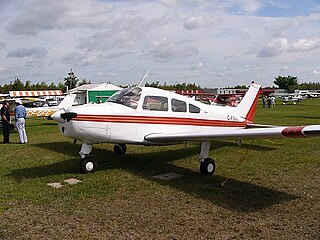
The Beechcraft Musketeer is a family of single-engined, low-wing, light aircraft that was produced by Beechcraft. The line includes the Model 19 Musketeer Sport, the Model 23 Musketeer, Custom and Sundowner, the Model 23-24 Musketeer Super III, the retractable gear Model 24R Sierra and the military CT-134 Musketeer.

The Curtiss Robin, introduced in 1928, is an American high-wing monoplane built by the Curtiss-Robertson Airplane Manufacturing Company. The J-1 version was flown by Wrongway Corrigan who crossed the Atlantic after being refused permission to do so.
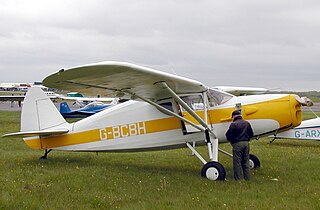
The Fairchild Model 24, also called the Fairchild Model 24 Argus and UC-61 Forwarder, is a four-seat, single-engine monoplane light transport aircraft designed by the Fairchild Aviation Corporation in the 1930s. It was adopted by the United States Army Air Corps as UC-61 and also by the Royal Air Force. The Model 24 was itself a development of previous Fairchild models and became a successful civil and military utility aircraft.
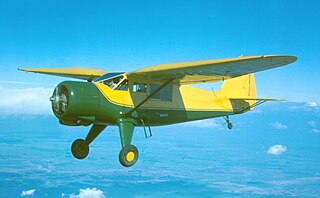
The Stinson Reliant is a popular single-engine four- to five-seat high-wing monoplane manufactured by the Stinson Aircraft Division of the Aviation Manufacturing Corporation of Wayne, Michigan.

The Monocoupe 90 was a two-seat, light cabin airplane built by Donald A. Luscombe for Monocoupe Aircraft. The first Monocoupe was built in an abandoned church in Davenport, Iowa, and first flew on April 1, 1927. Various models were in production until the late 1940s.

The Ryan STs are a series of two seat, low-wing monoplane aircraft built in the United States by the Ryan Aeronautical Company. They were used as sport aircraft, as well as trainers by flying schools and the militaries of several countries.
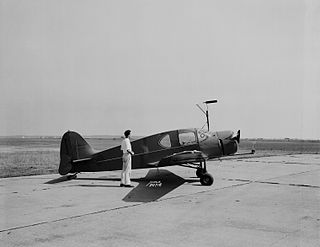
The Bellanca 14-7 Cruisair and its successors were a family of single-engined light aircraft manufactured in the United States from the mid-1930s onwards.

The Fleet Finch is a two-seat, tandem training biplane produced by Fleet Aircraft of Fort Erie, Ontario. There were a number of variants mainly based on engine variations. Over several years beginning in 1939, a total of 447 Finches were built, nearly all (431) of them for use as elementary trainers in the British Commonwealth Air Training Plan (BCATP) during the Second World War.

The Waco Custom Cabins were a series of up-market single-engined four-to-five-seat cabin sesquiplanes of the late 1930s produced by the Waco Aircraft Company of the United States. "Custom Cabin" was Waco's own description of the aircraft which despite minor differences, were all fabric-covered biplanes.

The Warner Scarab is an American seven-cylinder radial aircraft engine, that was manufactured by the Warner Aircraft Corporation of Detroit, Michigan in 1928 through to the early 1940s. In military service the engine was designated R-420.
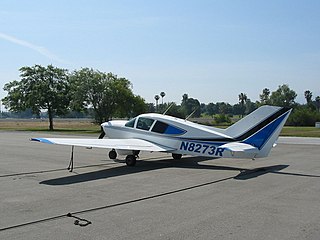
The Bellanca Viking and Super Viking are a series of single-engine, four-seat, high performance, retractable gear aircraft manufactured in the USA during the 1960s and 1970s. The aircraft developed through modifications of classic designs by the aviation pioneer Giuseppe Bellanca. A total of 1,356 Vikings have been produced with most production between 1968 and 1975.
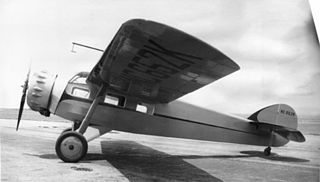
The Cessna Model DC-6 was a 1920s American high-wing four-seat tourer built by the Cessna Aircraft Company. It was used by the United States Army Air Corps as the UC-77/UC-77A.
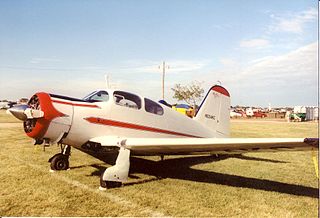
The Harlow PJC-2 is a 1930s American four-seat cabin monoplane, designed by Max Harlow.
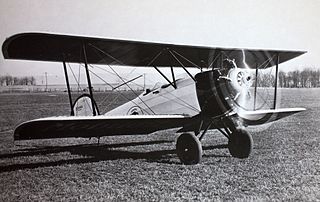
The Kreider-Reisner Challenger is an American utility biplane aircraft designed and produced by the Kreider-Reisner Aircraft Company, which was later taken over by the Fairchild Aircraft Company.

The Fairchild 22 Model C7 was an American two-seat touring or training monoplane designed and built by the Kreider-Reisner division of the Fairchild Aircraft Corporation at Hagerstown, Maryland.

The Ryan S-C (Sports-Coupe) was an American three-seat cabin monoplane designed and built by the Ryan Aeronautical Company. At least one was impressed into service with the United States Army Air Forces as the L-10.
The Cessna CR-2 was a mid-winged racing aircraft in the CR series of Cessna racers.
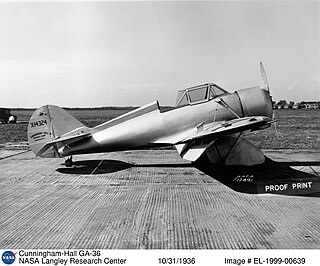
The Cunningham-Hall GA-21 was an American two-seat monoplane design to compete for the Guggenheim Safe Aircraft Competition in 1934. Its distinguishing feature was full span flaps which could be manually or automatically adjusted. The GA-36 was a military version of it with tandem, rather than side-by-side seating.























